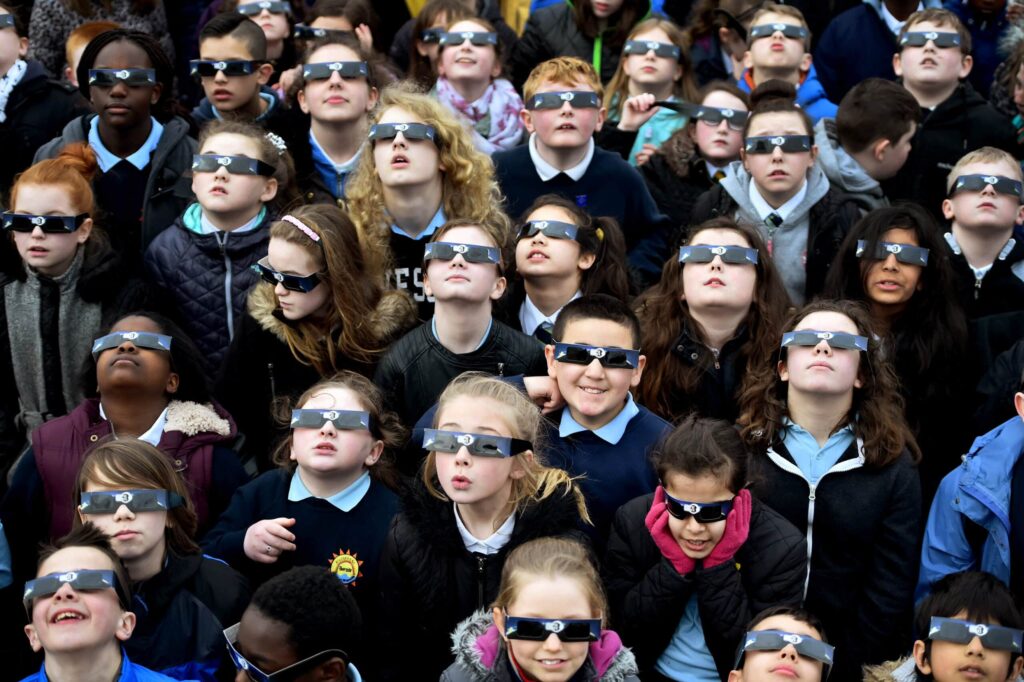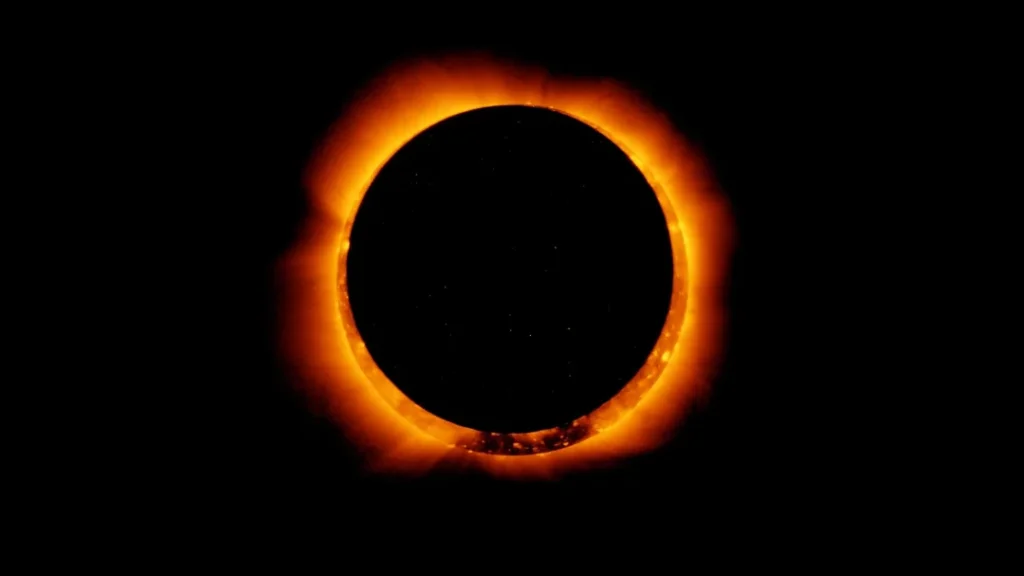The Great North American Eclipse: A Once-in-a-Lifetime Event Arrives April 8th, 2024
Skywatchers across North America are gearing up for a spectacular celestial event – a total solar eclipse! Nicknamed the “Great North American Eclipse,” this phenomenon will occur on Monday, April 8th, 2024, and will be visible from a path stretching from Mexico, through the United States, and into Canada.
During a total solar eclipse, the Moon completely covers the Sun’s bright face, plunging the day into an eerie twilight. This fleeting moment offers a glimpse of the Sun’s tenuous atmosphere, the corona, which is normally obscured by the Sun’s brilliance.
What to Expect
The eclipse will be visible for varying durations depending on your location within the path of totality. The zone of totality, where the Moon entirely blocks the Sun, will range from a few seconds to a maximum of 4 minutes and 26 seconds in southwest Texas. Observers outside the path of totality will witness a partial eclipse, where the Sun appears as a crescent.

Interesting Facts
- Solar eclipses have played a significant role in shaping ancient cultures’ beliefs and myths. In ancient China, for example, people believed that solar eclipses occurred when a celestial dragon was trying to devour the Sun, prompting them to make loud noises and shoot arrows into the sky to scare the dragon away.
- The longest total solar eclipse of the 21st century occurred on July 22, 2009, lasting a maximum of 6 minutes and 39 seconds. It was visible from parts of India, Nepal, Bhutan, Bangladesh, Myanmar, China, and the Pacific Ocean.
- The phenomenon known as “Baily’s beads” occurs just before and after a total solar eclipse when beads of sunlight shine through the valleys and mountains along the edge of the Moon, creating a stunning effect resembling a string of shining beads.
- During a total solar eclipse, the temperature can drop by as much as 20 degrees Fahrenheit (11 degrees Celsius) in a matter of minutes due to the sudden reduction in solar radiation.
- The Saros cycle is a period of approximately 18 years and 11 days after which solar eclipses repeat. Eclipses separated by one Saros cycle share similar geometries and locations on Earth.
- Solar eclipses have been used for scientific discovery, such as in 1919 when a total solar eclipse allowed astronomers to confirm Einstein’s theory of general relativity by observing the bending of starlight around the Sun’s gravitational field.
- In 585 BCE, a solar eclipse reportedly ended the Battle of Halys between the Medes and the Lydians. This event is said to have prompted both sides to negotiate peace, marking one of the earliest recorded instances of an eclipse influencing human history.
- The first known record of a solar eclipse dates back to ancient China in 2136 BCE, where it was documented on oracle bones used for divination.
- The term “eclipse” comes from the Greek word “ekleipsis,” meaning “abandonment” or “the downfall,” which aptly describes the sudden dimming of the Sun during such an event.
- Solar eclipses offer unique opportunities for scientific research, allowing scientists to study the Sun’s corona, solar flares, and other phenomena that are normally obscured by the Sun’s intense brightness.

Here are some key things to remember:
- Safety First: Looking directly at the Sun, even during a partial eclipse, can cause permanent eye damage. Only view the eclipse through specially certified solar filters that meet the ISO 12312-2 international safety standard.
- Plan Your Viewing: If you’re located within the path of totality, find an open area with a clear view of the horizon. Consider arriving early, as these areas tend to get crowded.
- Embrace the Experience: The total eclipse is a truly awe-inspiring sight. Take a moment to appreciate the celestial dance and the opportunity to witness this rare event.
What is Solar Eclipse?
A solar eclipse occurs when the moon passes between the Earth and the Sun, blocking all or part of the Sun’s light. This happens only during a new moon when the Sun and Moon are in conjunction as seen from Earth.
There are three main types of solar eclipses:
- Total Solar Eclipse: This occurs when the Sun is completely obscured by the Moon. From a particular location on Earth, it appears as though the Sun has been completely covered by the Moon, leaving only the solar corona visible. Total solar eclipses are rare and can only be observed from a small area on Earth.
- Partial Solar Eclipse: This occurs when only a portion of the Sun is obscured by the Moon. From a specific location on Earth, it appears as though the Moon takes a “bite” out of the Sun, leaving part of the Sun still visible.
- Annular Solar Eclipse: This occurs when the Moon is too far from the Earth to completely cover the Sun’s disk. During an annular eclipse, the Sun appears as a bright ring surrounding the dark disk of the Moon. This happens because the apparent size of the Moon is smaller than that of the Sun, so even when it is directly in front of the Sun, it does not completely cover it.
Solar eclipses are remarkable astronomical events that have fascinated people throughout history. They often draw large crowds of observers to the areas where they can be seen, as they are rare and visually striking phenomena. However, it’s important to observe them safely using appropriate eye protection, as looking directly at the Sun during an eclipse can cause permanent eye damage.

Additional Resources
- NASA Eclipse Website: https://eclipse.gsfc.nasa.gov/
- American Astronomical Society: https://aas.org/
Don’t miss this chance to witness the power and beauty of the cosmos!








